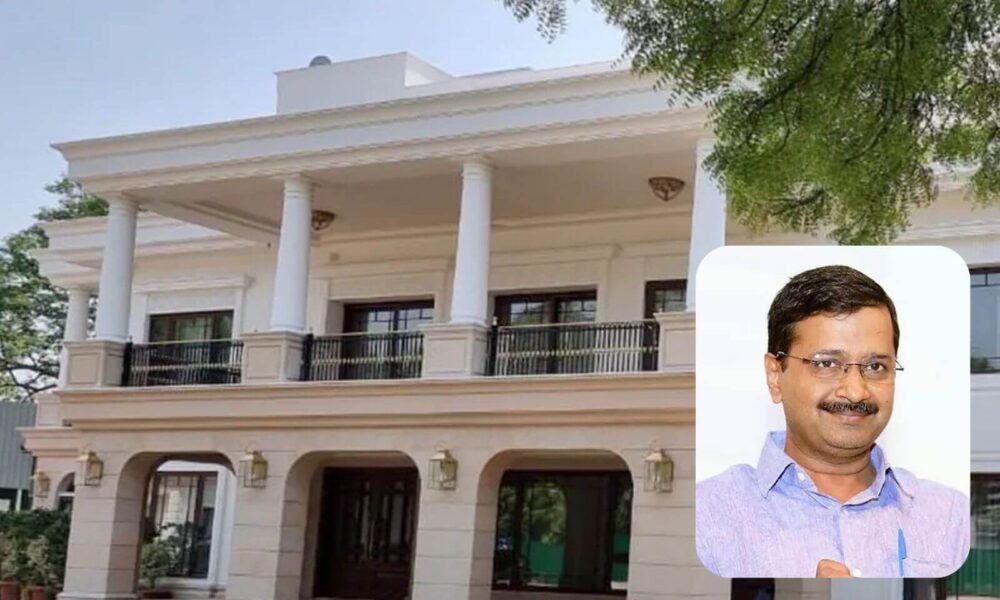Politics
Delhi CM Residence Renovation Controversy
A CAG report revealed that Delhi CM Arvind Kejriwal’s official residence renovation cost ₹33 crore, far exceeding the original ₹7.9 crore budget, sparking political and public scrutiny.
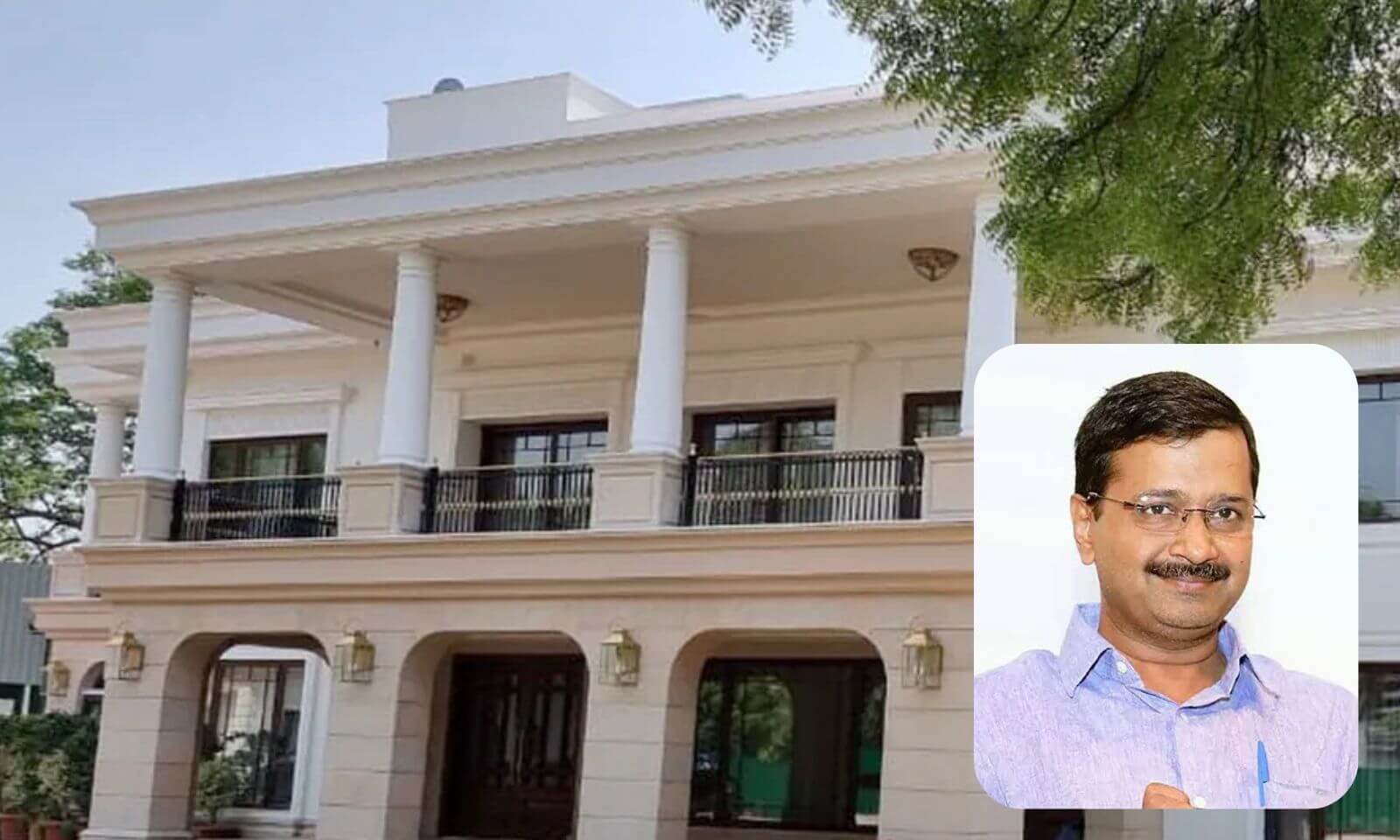
A recent report by the Comptroller and Auditor General (CAG) has caused a stir in Delhi’s political scene. It revealed that the renovation of Delhi Chief Minister Arvind Kejriwal’s official residence exceeded the initial budget of ₹7.9 crore, ballooning to over ₹33 crore. The findings have raised serious concerns about how public funds are being managed, especially given the lavish spending on luxury items and the project delays extending into 2023.
“Budget Overruns and Luxury Spending”
The renovation of the Delhi CM’s residence was originally approved with a budget of ₹7.9 crore.
The goal was to make the residence safer and more functional. However, the final cost far exceeded expectations, with a significant portion of the budget being spent on expensive furniture, high-end fittings, and lavish decor. Critics argue that such luxury spending is hard to justify, especially when many Delhi residents are struggling with rising costs of living and unemployment. The extravagant nature of this spending on Arvind Kejriwal’s residence raises questions about the government’s priorities when public resources could have been allocated elsewhere.
“Delays and Project Management Issues”
What was intended as a quick renovation project turned into a prolonged affair, dragging on into 2023.
This delay has sparked accusations of poor planning and mismanagement. The Aam Aadmi Party (AAP) government is being criticized for failing to manage the project efficiently, leading to concerns about accountability and control over public funds. Critics point out that the extended timeline reflects a lack of control over public spending, which is critical during times of financial strain.
“Missing Documents Raise Concerns”
One of the most troubling aspects of the CAG report is the missing documentation.
Many key records and approvals were reportedly not available for review, making it difficult to verify the legitimacy of the spending. This has led to growing calls for a thorough investigation into how taxpayer money was used and whether the renovation costs were justified. The lack of transparency in the documentation process has added fuel to the fire, with critics demanding accountability for how funds were spent on the Delhi CM renovation.
“Political Reactions and Criticism”
Opposition parties, particularly the Bharatiya Janata Party (BJP), have used the CAG findings to attack Kejriwal and his administration.
BJP leaders accused the Delhi Chief Minister of misusing public resources for personal luxuries. They suggest that the final renovation costs could have reached up to ₹80 crore, much higher than the reported ₹33 crore. The BJP also criticizes the AAP for being disconnected from the struggles of common people, pointing out the excessive nature of the renovation while many citizens face economic hardships. The spending on luxury items for the residence is being framed as a symbol of government inefficiency and disconnect from the public’s needs.
“Delhi Government’s Response”
In defense, the Delhi government argues that the renovation was necessary to ensure the safety and functionality of the Chief Minister’s residence.
AAP officials maintain that the project followed proper government procedures and that the spending was justified for maintaining the property. However, they have yet to address concerns about the luxury spending or the missing documentation, which remains a point of contention for critics.
“Calls for Transparency and Accountability”
The controversy over the renovation of the Delhi CM’s residence has become a key issue in Delhi’s political discussions.
Calls for greater transparency and accountability in government spending are growing, especially when taxpayer money is involved. The BJP is pushing for a detailed investigation, which could become a significant political challenge for Kejriwal and the AAP. This situation underscores the need for proper financial management and accountability, particularly in times of economic strain. The controversy surrounding the renovation has raised broader questions about the allocation of public funds, especially when many people in Delhi are struggling financially.
This ongoing controversy is likely to continue to shape political conversations in Delhi, with both sides demanding further scrutiny of public spending and whether such extravagant projects are justified during difficult economic times. The public’s growing concerns about luxury spending at the Delhi CM’s residence highlight the need for a more responsible approach to managing public funds and ensuring that taxpayer money is used wisely.
Watch and Subscribe to the YouTube Channel: EBT Entrepreneur Business Times
Useful Topics:
Entrepreneur Business Times | EBT – Entrepreneur Business Times | Entrepreneurship Latest News & Headlines | Business News | Startup News | CEO Interviews | Automotive News | Pharmaceutical News | FMCG News | Electric Vehicle News | Electrical and Electronics News | Sanitary and Hardware News | Technology News | Politics News | Fashion News | Sports News | Education News | Entertainment News | Video| Entrepreneur Media India | Business News Live | Share Market News | Business Times | Entrepreneurship News India | Entrepreneurship News today | Awards for entrepreneurs in India | Young Entrepreneur Awards India | Latest entrepreneurs in India | Starting a Business | Entrepreneurship in India | Entrepreneur Magazine | Business News Live | Entrepreneur Motivation | Entrepreneur Mindset | Entrepreneur podcast | Entrepreneur | How to become an Entrepreneur | How to be an entrepreneur
Business
Donald Trump Announces Fresh Tariffs – Which Countries Will Suffer Most?
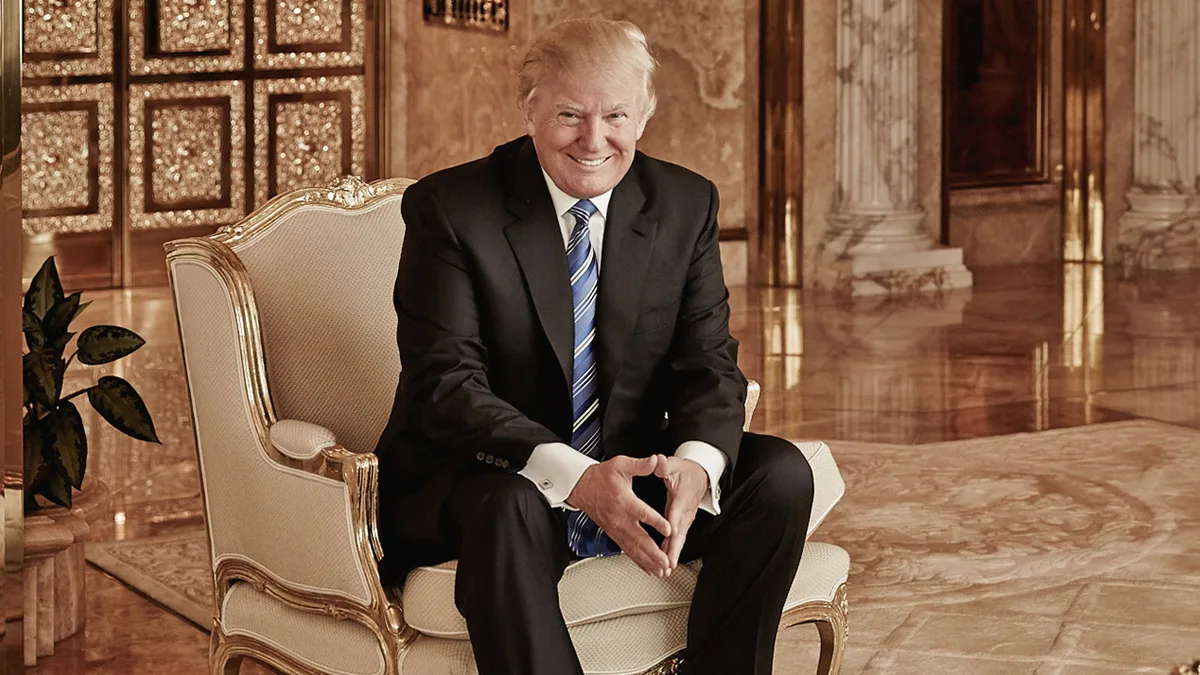
President Donald Trump Announces Fresh Tariffs
In a move that has sent ripples through global markets, President Donald Trump has announced a new wave of tariffs set to take effect on August 1, 2025. The most severely impacted nations face steep rates of up to 40%, with Myanmar and Laos bearing the brunt of these economic measures. This escalation marks a significant turning point in America’s trade policy, as the administration adopts an increasingly aggressive stance toward what it perceives as unfair trading practices.
While the deadline looms large on the economic horizon, Trump has indicated it’s “not 100 percent firm,” suggesting room for diplomatic maneuvering. So far, only the United Kingdom and Vietnam have successfully negotiated trade agreements with the U.S., leaving 12 other trading partners scrambling to secure deals before the tariffs kick in. The President has also issued a stark warning: any retaliatory measures from affected nations will trigger equivalent responses from the United States, potentially spiraling into an even more intense trade conflict. As global markets brace for impact, let’s examine which countries stand to lose the most, how these tariffs will be structured, and what economic implications we can expect in the coming months.

Trump’s New Tariff Announcement
On July 7, 2025, President Donald Trump signed an Executive Order extending certain tariff rates until August 1, 2025. This decision follows his April 2025 declaration of a national emergency in response to trade practices threatening U.S. economic and national security. The administration has positioned these measures as necessary steps to address the persistent U.S. goods trade deficit and establish more balanced bilateral trade relationships.
Implementation date set for August 1
The new reciprocal tariff rates will take effect on August 1, 2025, replacing the previous rates that were set to expire on July 9. This timeline provides affected countries with a short adjustment period while maintaining pressure for trade concessions. The implementation follows approximately 90 days after the modification of previous tariff rates, during which time numerous countries have engaged in negotiations with the U.S. administration.
Tariff rates reaching up to 40% for some countries
The announced tariff structure varies significantly by country, with some nations facing substantial increases. Countries that have received notification of their new rates include Japan and South Korea (both at 25%), South Africa (30%), and others facing even higher rates approaching 40%. These rates represent a dramatic increase from historical tariff levels, with the average U.S. tariff rate jumping from 2.5% to an estimated 27% since Trump’s return to office—the highest level in over a century.
Flexibility in the negotiation timeline
While implementing these substantial tariffs, the Trump administration has signaled its willingness to adjust rates based on trade negotiations. Countries that have agreed to lower their tariffs or eliminate non-tariff barriers have seen more favorable treatment, with some experiencing lower rates than previously announced. The administration emphasizes that countries willing to manufacture on U.S. soil will face no tariffs, creating a significant incentive for foreign businesses to invest in American manufacturing facilities.
With these new tariff announcements established, let’s examine which countries will bear the heaviest economic impact from Trump’s trade policy in our next section, “Countries Most Affected by New Tariffs.”
Countries Most Affected by New Tariffs
A. Myanmar and Laos face the highest rates at 40%
Now that we’ve examined Trump’s tariff announcement, let’s examine which countries are most affected. Myanmar and Laos face the steepest tariffs at 40%, impacting Myanmar’s clothing exports and Laos’ electronic goods. Myanmar’s military government, represented by Maj. Gen. Zaw Min Tun has expressed willingness to negotiate, while both nations struggle with the highest penalty rates among all targeted countries.
B. Impact on 14 trading partners
The tariffs affect a total of 14 trading partners with varying rates. After Myanmar and Laos at 40%, Cambodia and Thailand face 36% tariffs (Cambodia’s rate was reduced from an initially proposed 49%). Bangladesh follows with a 35% tariff primarily affecting its crucial garment industry. South Africa faces a 30% rate, while Japan, Malaysia, South Korea, and Tunisia all received 25% tariffs targeting their key export sectors, including automobiles and electronics.
C. Exceptions for countries with finalized agreements (UK and Vietnam)
Some nations have successfully negotiated exemptions from these punitive measures. The United Kingdom and Vietnam have finalized trade agreements with the United States, earning them complete exceptions from the new tariff regime. These successful negotiations demonstrate the potential path forward for affected countries, as President Trump’s administration has indicated a willingness to remove tariffs for nations that secure satisfactory trade deals. With these country-specific impacts established, we’ll next examine the tariff structure and implementation timeline in greater detail.
Photo Source: https://www.trump.com/leadership/donald-j-trump-biography
Politics
Ruby Phogat Yadav BJP Delegation Congratulates CM Rekha Gupta
Ruby Phogat Yadav led a BJP delegation to CM Rekha Gupta’s residence, emphasizing party unity and development goals.
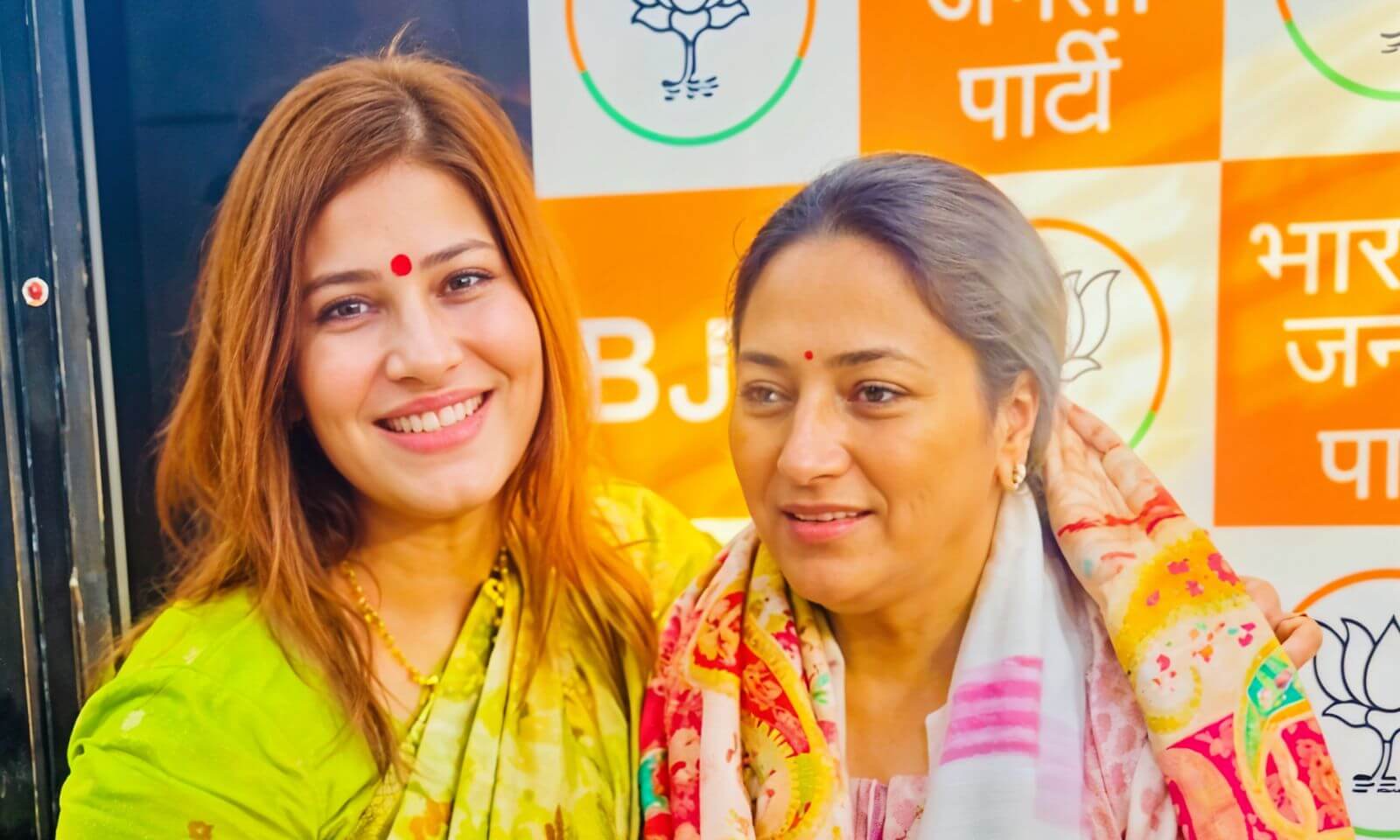
Hundreds of BJP party workers accompanied the leader to the Chief Minister’s home, where they extended their congratulations. Ruby Phogat Yadav, known for her dedication and commitment, has been an influential figure in the party.

Her presence at Chief Minister Rekha Gupta’s residence highlights the sense of unity and camaraderie within the BJP ranks. Phogat’s visit to the Chief Minister is not just a formality but a symbol of the collective support within the party. During her time there, the leader engaged with party activists and discussed plans for spreading the party’s message. The honoring of Chief Minister Rekha Gupta is a testament to the leadership style that Ruby Phogat Yadav embodies. The Chief Minister, in turn, expressed gratitude for the overwhelming support from party workers and stated the importance of continued collaboration within the party.
Phogat’s visit is being seen as an opportunity to consolidate efforts toward building a strong party base in the region. The Chief Minister’s residence was enthusiastic as party workers celebrated their leader’s visit and united in their resolve to work toward the party’s success. “Phogat’s presence at Chief Minister Rekha Gupta’s residence sent a strong message of unity and support within the party, underscoring the importance of working together towards common goals. The grounds of the Chief Minister’s home echoed with words of encouragement and optimism as party workers gathered around their leader to discuss strategies for the upcoming challenges.

Ruby Phogat Yadav’s proactive approach, combined with support from party members, aims to strengthen the party’s structure and outreach. As party synergies bloom in the state, the visit plays a vital role in laying the groundwork for long-term achievements. With Ruby Phogat Yadav’s experience and Chief Minister Rekha Gupta’s leadership, the BJP is positioned to make significant strides in the region. The joint efforts will be instrumental in bringing a positive change for the people and have the potential to leave a lasting impact on the BJP’s presence in the area.” Party members are optimistic that Phogat’s visit can pave the way for further collaborations.
Chief Minister’s Rekha Gupta’s newly appointed office was gifted a batch of BJP tradition as hundreds of party workers, greeted her at Delhi chief minister’s house them. Ruby Phogat Yadav delightedly reached out for their support.
During the meeting, Ruby Yadav wished Rekha Gupta and discussed the development of Delhi. Infrastructure, education, healthcare, and other prime areas of focus for the growth of the city were some topics discussed during the conversation.
“We are always up for contributing positively to the development of Delhi,” Ruby Yadav said. We hope the city will soar to new heights under Chief Minister Rekha Gupta Ji’s leadership.”
The enthusiasm and energy witnessed among BJP workers during the visit and the common intention for a better Delhi, as articulated by the two leaders, show great prospects of the both working together,” a joint statement read.
Useful Topics:
Entrepreneur Business Times | EBT – Entrepreneur Business Times | Entrepreneurship Latest News & Headlines | Business News | Startup News | CEO Interviews | Automotive News | Pharmaceutical News | FMCG News | Electric Vehicle News | Electrical and Electronics News | Sanitary and Hardware News | Technology News | Politics News | Fashion News | Sports News | Education News | Entertainment News | Video| Entrepreneur Media India | Business News Live | Share Market News | Business Times | Entrepreneurship News India | Entrepreneurship News today | Awards for entrepreneurs in India | Young Entrepreneur Awards India | Latest entrepreneurs in India | Starting a Business | Entrepreneurship in India | Entrepreneur Magazine | Business News Live | Entrepreneur Motivation | Entrepreneur Mindset | Entrepreneur podcast | Entrepreneur | How to become an Entrepreneur | How to be an entrepreneur
Politics
Union Budget 2025 Tax Reforms Middle Class
The Union Budget 2025 introduces significant tax relief for salaried individuals, focusing on raising the tax exemption limit and revising tax slabs, benefiting the middle class.
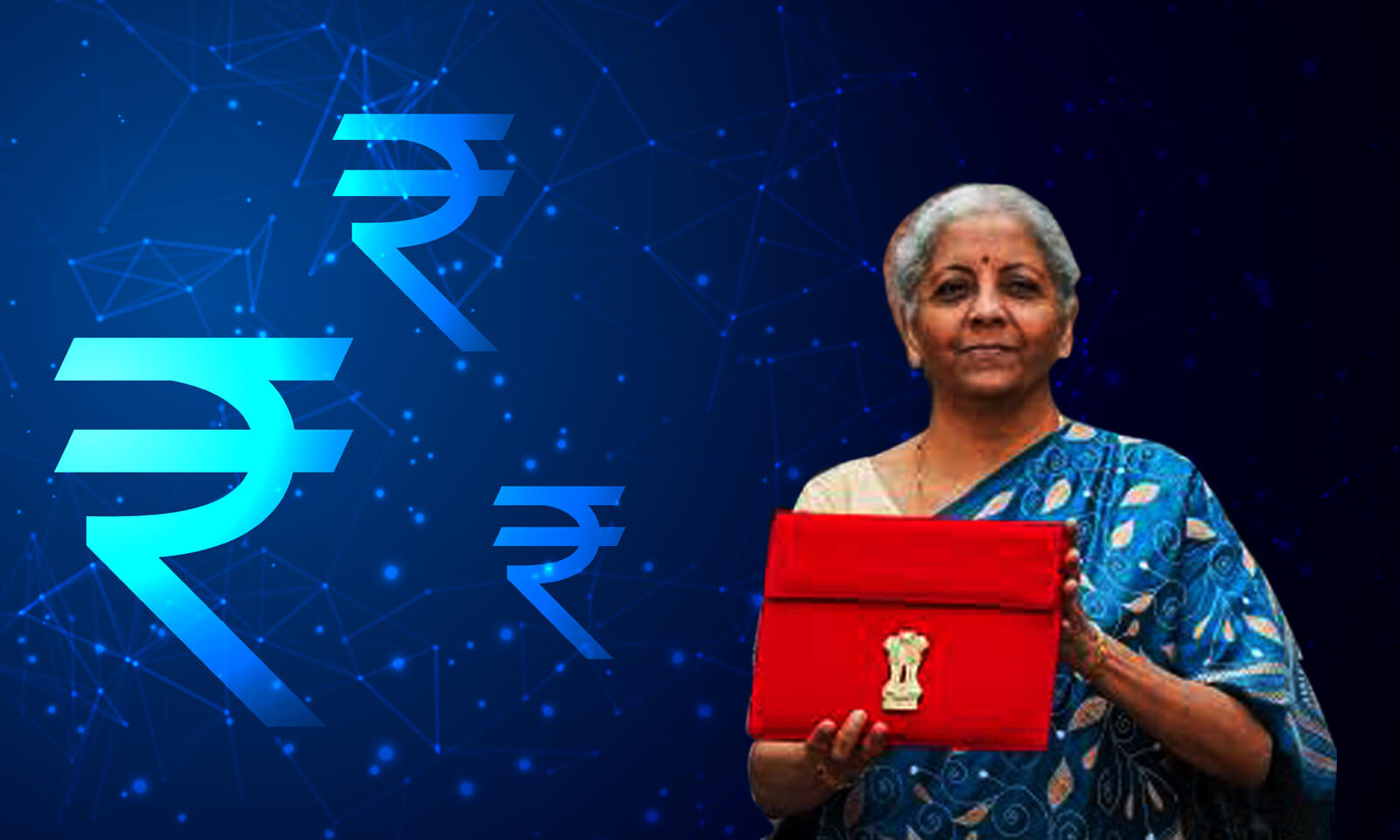
The Union Budget 2025, presented by Finance Minister Nirmala Sitharaman, has unveiled a series of key tax reforms aimed at providing significant relief to salaried individuals, particularly the middle class. In a move to stimulate economic growth and increase disposable income, the government has proposed several measures that will directly benefit taxpayers across various income brackets. These reforms are seen as part of the broader strategy to boost consumption, savings, and investments, thereby fostering overall economic development.
“Increased Tax Exemption Threshold”
One of the most notable announcements in the Union Budget 2025 is the increase in the income tax exemption threshold.
Under the new provisions, individuals earning up to Rs 12 lakh annually will be completely exempt from paying income tax. This marks a significant rise from the previous exemption limit of Rs 7 lakh. This move is expected to benefit millions of salaried employees who will now retain a larger portion of their income, ultimately increasing their purchasing power.
With the increase in the exemption limit, taxpayers will have more flexibility in managing their finances and allocating funds toward savings, investments, and discretionary spending. The government’s decision to raise the tax exemption threshold reflects its focus on supporting the salaried middle class, which forms the backbone of India’s consumer-driven economy.
“Revised Tax Slabs to Provide Relief”
Along with the increased exemption limit, the government has also introduced revised tax slabs for the 2025-26 financial year.
The new structure includes several changes designed to reduce the tax burden on middle-income earners. The tax slabs are now as follows:
- Income up to Rs3 lakh: Nil
- Rs 3 lakh to 7 lakh: 5%
- Rs 7 lakh to 10 lakh: 10%
- Rs 10 lakh to 12 lakh: 15%
- Rs 12 lakh to 15 lakh: 20%
- Above Rs15 lakh: 30%
These changes are expected to significantly benefit taxpayers within the Rs 3 lakh to Rs 10 lakh range, who will see a reduced tax liability. For those earning above Rs10 lakh, the tax burden will remain, but the adjustment in the lower slabs is a move in the right direction, offering more financial flexibility for salaried individuals.
“Higher Standard Deduction for Salaried Employees”
The Union Budget 2025 also includes a generous increase in the standard deduction for salaried employees.
The deduction has been raised from Rs 50,000 to Rs 75,000 annually, providing an additional tax-saving opportunity. This increase is expected to reduce the taxable income of salaried employees and give them more take-home pay at the end of the month.
In addition to the standard deduction, the government has also increased the deduction available for family pensions. The deduction for family pensioners has been raised from Rs 15,000 to Rs 25,000, ensuring that senior citizens, who depend on pensions for their livelihood, receive much-needed relief.
“The middle class Benefits the Most”
The primary beneficiaries of these tax reforms are the salaried middle class, which has been facing the brunt of rising costs and inflation.
With more money in their hands due to reduced taxes, individuals will be able to increase their spending power, stimulating demand in various sectors of the economy.
Additionally, the revised tax structure aims to incentivize savings and investment, allowing individuals to invest more in instruments like mutual funds, pension schemes, and insurance policies. This shift towards greater financial independence and security is expected to have long-term positive effects on both personal finances and the country’s overall economic stability.
“A Boost to Economic Growth”
These reforms are not only designed to provide immediate relief to taxpayers but also to bolster long-term economic growth.
By enhancing disposable income and encouraging increased consumption, the government aims to stimulate demand and investment, which will, in turn, create jobs and contribute to India’s economic recovery and growth trajectory.
In conclusion, the Union Budget 2025 has delivered much-needed tax relief for the salaried middle class, with measures aimed at reducing the tax burden, increasing disposable income, and encouraging savings. These reforms mark a significant shift in India’s tax landscape and are expected to have a positive impact on the economy, driving growth and improving the financial well-being of millions of taxpayers. As the country navigates its path toward economic recovery, these tax measures will play a crucial role in shaping the future of India’s middle class.
Useful Topics:
Entrepreneur Business Times | EBT – Entrepreneur Business Times | Entrepreneurship Latest News & Headlines | Business News | Startup News | CEO Interviews | Automotive News | Pharmaceutical News | FMCG News | Electric Vehicle News | Electrical and Electronics News | Sanitary and Hardware News | Technology News | Politics News | Fashion News | Sports News | Education News | Entertainment News | Video| Entrepreneur Media India | Business News Live | Share Market News | Business Times | Entrepreneurship News India | Entrepreneurship News today | Awards for entrepreneurs in India | Young Entrepreneur Awards India | Latest entrepreneurs in India | Starting a Business | Entrepreneurship in India | Entrepreneur Magazine | Business News Live | Entrepreneur Motivation | Entrepreneur Mindset | Entrepreneur podcast | Entrepreneur | How to become an Entrepreneur | How to be an entrepreneur



